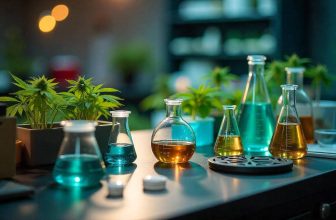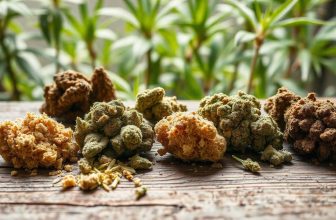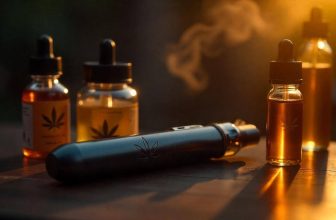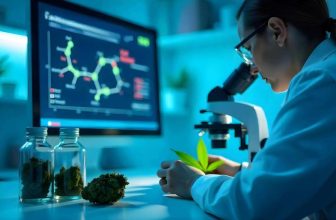From its use in ancient Chinese medicine to forming the basis of clothing in 15th century Europe, hemp has a long history of human use. Even today, this plant plays a crucial role in producing many products like clothing, animal feeds, and CBD/CBG/THC/cannabis-based items.
Facts About Hemp Culture
In this light, here are some facts you should know about hemp culture.
- Hemp plants can be male, female, or hermaphrodites. Fluctuations in the crop's environment cause the last variant.
- For clothing, hemp fibers can get harvested from male-female or hermaphrodite plants.
- During its vegetative and flowering stages, hemp requires specific amounts of light and dark to produce maximum yield. For this purpose, the tools mentioned above get used. Cultivators use artificial lighting and blackout lighting to manipulate plant growth.
- Products like CBD oils and tinctures can only be made from the flowers of the female plant. Furthermore, these buds have to be unfertilized to produce maximum oil.
- Hemp seed oil is made from the seeds of the hemp plant. These come from female plants that have been fertilized.
- All hemp plants belong to the species Cannabis sativa. However, subspecies and hybrid variants also exist.
- It is possible to buy female-only hemp seeds artificially altered to produce only female offspring.
- Hemp can get cultivated indoors or outdoors.
1. Hemp Cultivation: Indoor, Outdoor
Depending on the intended use, hemp can be grown in a greenhouse or open fields. The distinction between male and female plants for extracting hemp fibers is irrelevant as they can be harvested from both varieties. For this reason, industrial-grade hemp used in clothing can be grown outdoors without the fear of fertilization.
However, for making CBD oil and related products, unfertilized female flowers are crucial. If, by chance, the female nodes catch pollen from male plants, it will produce considerably less resin, leading to low ROI. Therefore to ensure that the female plants remain unpollinated, indoor cultivation is preferred by many farmers. Not only does this method help keep the females intact, but a greenhouse/indoor facility also ensures better plant management.
This system helps cultivators be in charge of crucial factors like light exposure, temperature, as well as soil quality, and toxicity. When grown indoors, hemp plants go through various stages, including germination, seeding, transplanting, and flowering.
2. CBD Hemp Seed Germination
Before being planted, hemp seeds need to be soaked in water for several hours. This step improves germination by ensuring that the seed can absorb more nutrients from the soil. Seven to twelve hours is best for soaking, after which the seeds are ready to be planted.
When hemp seeds are grown indoors, you should plant them in a shallow depth at room temperature. If your seeds are at a 1-inch depth and around 60 to 70 degrees Fahrenheit, they can germinate without any problems. You can add mixes and natural blends while preparing the soil for germination.
Additionally, you can also add a cover over the planted seeds. Not only will this provide added protection, but it will also help regulate the internal humidity, leading to better germination.
3. How to Take Care of CBD Hemp Seedlings
After germination, it is crucial to take care of your hemp seedlings throughout the growing period. This work entails taking care of the plant's nutrition, temperature, humidity, and exposure to light.
For example, the seedling should be protected from extreme temperatures during this period. Due to its delicate build at this stage, the heat should be even and kept around 68 degrees Fahrenheit. Aside from the temperature, pressure is also essential in helping the soil retain moisture. A cap/covering is recommended during the initial weeks of planting because it helps maintain humidity levels.
As with all light-depended, the seedlings require sufficient light to grow. For this reason, you must provide the plants with light for over eighteen hours daily. Using artificial light will help your seeds grow faster. To enhance growth further, you can add organic nitrogen-rich fertilizers to the mix to improve soil fertility. On meeting the appropriate conditions, the plants will sprout and soon be ready for transplanting.
4. Transplanting Hemp Seedlings
For transplanting, you must uproot the hemp seedlings without causing permanent damage to the plants. This step requires careful extraction by paying attention to the root depth. If your seedlings are still not sturdy enough, you can transplant them onto a bigger container and wait for them to grow. Once they are ready, you can finally transplant them by gently uprooting them.
Soil depth is a crucial factor when transplanting hemp seedlings. Plants should not be planted too deep or too shallow. The roots should be properly covered, but any deeper than that can cause more harm than good. Since the plant is exceptionally delicate during this period, the stem may start rotting if it comes in contact with the soil.
5. Harvesting CBD Hemp Fibers
From paper to insulation to textile and rope, hemp fibers have a wide range of applications. Based on their uses, industrial hemp gets divided into two main types, fiber-based and seed-based hemp. The latter is used as a food ingredient in flour, animal feeds, and more, while the former s the variant from which hemp fibers get extracted.
Based on the crop size, fiber harvesting is either mechanized or manual. Larger farms may opt for combined harvesters since it makes the process more efficient. Upon maturing, the machine plucks the seeds and flowers of the hemp plant while processing the stalks for fiber extraction. Smaller cultivators still rely on manual methods to maintain the quality of the hemp flowers, which contain most of the resin.
6. Collecting Hemp Seeds
‘Seed cultivars,” or seed-based varieties, are preferred if the goal is to produce as many hemp seeds as possible. These plants have shorter stalks and a higher seed density. The seeds get used in paint, bakery items, fuel, and more.
The hemp seeds are deemed ready for harvest when they begin to burst from the seed heads. Cultivators can manually pick these seeds using tobacco knives or other equipment. You can also use combined harvesters to separate the hemp seeds from the stalks. Once this step is complete, they are ready for transport to the processing facilities.
Tips to Grow CBD Hemp Seeds
- For hemp plants to be legal in the US, they must have a THC content of 0.3% or less.
- According to the US Department of Agriculture rules, you must submit samples of your crop 15 days before the harvest date. They will be tested in a USDA-authorized testing center to check if they pass the THC legality test or not.
- When choosing your seeds, you should opt for a variety that naturally produces more hemp seeds.
- When growing hemp seeds, transplantation is crucial, and you need to be extra careful not to harm the delicate seedlings.
FAQ
What are the differences between Hemp and Marijuana seeds?
There is no scientific difference between hemp and marijuana seeds as they belong to the cannabis Sativa/indica family. However, a distinction is drawn up due to legal requirements. According to these terms, marijuana seeds are the seeds of those plants that produce high amounts of THC, ranging from 0.3% to 20%.
Similarly, hemp seeds are seeds of plants that contain less than 0.3% THC and pass the FDA limit on this psychoactive substance. Because of the THC potential, marijuana seeds are more expensive than hemp seeds.
What are the differences between Male and Female plants?
The main difference between male and female hemp plants is their amount of resin. Of the two, the latter has a higher amount of product and produces a bigger yield. An ideal crop/batch of hemp plants would consist only of female plants because of their high resin content. One of the ways to tell them apart from male plants is to look at the nodes.
Female plants will have hair-like growth to catch the pollen, while males will have sacs containing the said pollen. To ensure that they have a good ROI, farmers typically prevent the female hemp from being pollinated by culling the male plants.
What is the Photoperiod?
Photoperiod in hemp cultivation refers to the manipulation of the crop's growth stages through artificial light. As with most chlorophyll-producing plants, hemp gets largely influenced by light during the vegetative and flowering stages. Cultivators use artificial lighting and dark curtains during this time to ensure higher yields.
Eighteen hours of light and six hours of darkness is the norm for hemp in the vegetative state, while a 12/12 division works for crops in the flowering stage.
Follow us on 
Join the Community
Don't miss any news with our newsletter





